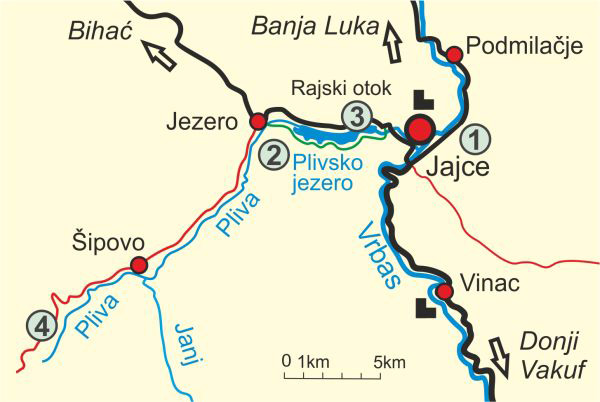 |
 |

Jajce is situated in central BiH. The town was built at the confluence of the Pliva and Vrbas Rivers, at the site of a 22 m high waterfall on the Pliva River. Jajce has had a very eventful and significant history, and the traces of this are still visible today. In the town and its surroundings, visitors can find 27 monuments from the BiH list of national monuments, making Jajce a unique outdoor museum.
Jajce is the only preserved settlement in BiH that already had all the characteristics of an urban center in the 15th c., when it was the seat of the Bosnian Kingdom. The last Bosnian King Stjepan Tomašević ruled from and subsequently died here in 1463. His grave is located on the Borovi Plateau, on the southern slope of Mt. Hum near Jajce. His remains have been kept in a glass coffin in Jajce's Franciscan monastery since 1888.
On November 29th and 30th, 1943, the second session of the Antifascist Council of National Liberation of Yugoslavia (AVNOJ) was held in Jajce and attended by 142 councilors. At this convention, representatives of BiH, Croatia, Serbia, Montenegro, and Slovenia partially renounced their sovereignty in order to form the federal state of Yugoslavia.
In addition to visiting the town of Jajce (1), the surrounding area offers numerous options for a pleasant holiday in nature. The Pliva Lakes (2), the Mlinčići Mills on the Pliva River (3), the Pliva River (4), the Vrbas River, and beautiful mountains are only some of this area's attractions.
The text of this subchapter can be found in the book.
The text of this subchapter can be found in the book.
The text of this subchapter can be found in the book.
The text of this subchapter can be found in the book.